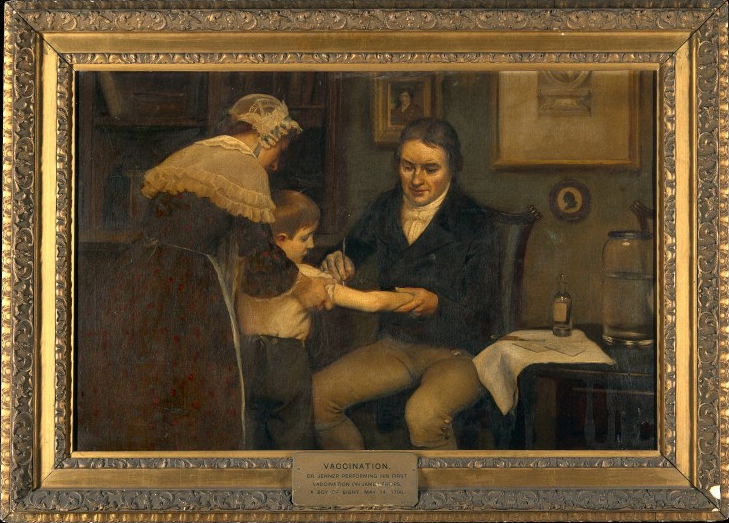|
Smallpox Hospital
The Smallpox Hospital, sometimes referred to as the Renwick Smallpox Hospital and later the Maternity and Charity Hospital Training School, was a hospital located on Roosevelt Island in Manhattan, New York City. Originally designed by architect James Renwick Jr., the 100-bed hospital opened in 1856, when the area was known as Blackwell's Island. A century after it opened, the hospital was closed, and the building eventually fell into disrepair. It was listed on the National Register of Historic Places in 1972 and designated a New York City Landmark four years later, the only ruin in the city with that designation. After the completion of an ongoing $4.5 million stabilization project, the Smallpox Hospital ruins will be open to the public. Building The hospital is situated at the southern tip of the island, adjacent to Franklin D. Roosevelt Four Freedoms Park. Renwick designed the main building. The south wing, built in 1903-04, was designed by York & Sawyer, while the north w ... [...More Info...] [...Related Items...] OR: [Wikipedia] [Google] [Baidu] |
Roosevelt Island
Roosevelt Island is an island in New York City's East River, within the borough of Manhattan. It lies between Manhattan Island to the west, and the borough of Queens, on Long Island, to the east. Running from the equivalent of East 46th to 85th Streets on Manhattan Island, it is about long, with a maximum width of , and a total area of . Together with Mill Rock, Roosevelt Island constitutes Manhattan's Census Tract 238, which has a land area of , and had a population of 11,722 as of the 2020 United States Census. Lying below the Queensboro Bridge, the island cannot be accessed directly from the bridge itself. Vehicular traffic uses the Roosevelt Island Bridge to access the island from Astoria, Queens, though the island is not designed for vehicular traffic and has several areas designed as car-free zones. Several public transportation options to reach the island exist. The Roosevelt Island Tramway, the oldest urban commuter tramway in the U.S, connects the island to ... [...More Info...] [...Related Items...] OR: [Wikipedia] [Google] [Baidu] |
Load-bearing Wall
A load-bearing wall or bearing wall is a wall that is an active structural element of a building, which holds the weight of the elements above it, by conducting its weight to a foundation structure below it. Load-bearing walls are one of the earliest forms of construction. The development of the flying buttress in Gothic architecture allowed structures to maintain an open interior space, transferring more weight to the buttresses instead of to central bearing walls. In housing, load-bearing walls are most common in the light construction method known as " platform framing". In the birth of the skyscraper era, the concurrent rise of steel as a more suitable framing system first designed by William Le Baron Jenney, and the limitations of load-bearing construction in large buildings, led to a decline in the use of load-bearing walls in large-scale commercial structures. Description A load-bearing wall or bearing wall is a wall that is an active structural element of a bu ... [...More Info...] [...Related Items...] OR: [Wikipedia] [Google] [Baidu] |
City Hospital (Roosevelt Island, New York)
City Hospital (also known as Island Hospital or Charity Hospital) was an historic hospital on Roosevelt Island, Manhattan in New York City. History Originally named Penitentiary Hospital and located on what was then known as Blackwell's Island, the first hospital was built in 1832 to serve the prisoners housed at Blackwell's Penitentiary. After the hospital was destroyed by a fire in 1858, architect James Renwick, Jr. designed a new building to be called City Hospital, on which prisoners completed construction in 1861. It served both inmates and New York City's poorer population. In 1870, the hospital was renamed Charity Hospital and a medical superintendent was hired after the quality of care was criticized. In 1877, Charity Hospital opened a school of nursing, the fourth such training institution in the United States. The program of education for nurses encompassed two to three years of training in the care of patients and general hospital cleanliness. At Charity Hospital, nu ... [...More Info...] [...Related Items...] OR: [Wikipedia] [Google] [Baidu] |
Smallpox Vaccine
The smallpox vaccine is the first vaccine to be developed against a contagious disease. In 1796, British physician Edward Jenner demonstrated that an infection with the relatively mild cowpox virus conferred immunity against the deadly smallpox virus. Cowpox served as a natural vaccine until the modern smallpox vaccine emerged in the 20th century. From 1958 to 1977, the World Health Organization (WHO) conducted a global vaccination campaign that eradicated smallpox, making it the only human disease to be eradicated. Although routine smallpox vaccination is no longer performed on the general public, the vaccine is still being produced to guard against bioterrorism, biological warfare, and monkeypox.Anderson MG, Frenkel LD, Homann S, and Guffey J. (2003), "A case of severe monkeypox virus disease in an American child: emerging infections and changing professional values"; ''Pediatr Infect Dis J'';22(12): 1093–96; discussion 1096–98. The term ''vaccine'' derives from the Lati ... [...More Info...] [...Related Items...] OR: [Wikipedia] [Google] [Baidu] |
Architectural Style
An architectural style is a set of characteristics and features that make a building or other structure notable or historically identifiable. It is a sub-class of style in the visual arts generally, and most styles in architecture relate closely to a wider contemporary artistic style. A style may include such elements as form, method of construction, building materials, and regional character. Most architecture can be classified within a chronology of styles which changes over time, reflecting changing fashions, beliefs and religions, or the emergence of new ideas, technology, or materials which make new styles possible. Styles therefore emerge from the history of a society. They are documented in the subject of architectural history. At any time several styles may be fashionable, and when a style changes it usually does so gradually, as architects learn and adapt to new ideas. The new style is sometimes only a rebellion against an existing style, such as post-modernism (meanin ... [...More Info...] [...Related Items...] OR: [Wikipedia] [Google] [Baidu] |
Oriel Window
An oriel window is a form of bay window which protrudes from the main wall of a building but does not reach to the ground. Supported by corbels, brackets, or similar cantilevers, an oriel window is most commonly found projecting from an upper floor but is also sometimes used on the ground floor. Oriel windows are seen in Arab architecture in the form of mashrabiya and in Turkish are known as ''şahnişin'' or ''cumba''. In Islamic culture, these windows and balconies project from the street-front of a house, providing an area in which women could peer out and see the activities below while remaining invisible. Origins According to the ''Oxford English Dictionary'', the term ''oriel'' is derived from Anglo-Norman ' and Late Latin ', both meaning "gallery" or "porch", perhaps from Classical Latin ' ("curtain"). * Oriel College, Oxford, took its name from a balcony or oriel window forming a feature of a building which occupied the site the college now stands on. * Oriel C ... [...More Info...] [...Related Items...] OR: [Wikipedia] [Google] [Baidu] |
Mansard Roof
A mansard or mansard roof (also called a French roof or curb roof) is a four-sided gambrel-style hip roof characterised by two slopes on each of its sides, with the lower slope, punctured by dormer windows, at a steeper angle than the upper. The steep roof with windows creates an additional floor of habitable space (a garret), and reduces the overall height of the roof for a given number of habitable storeys. The upper slope of the roof may not be visible from street level when viewed from close proximity to the building. The earliest known example of a mansard roof is credited to Pierre Lescot on part of the Louvre built around 1550. This roof design was popularised in the early 17th century by François Mansart (1598–1666), an accomplished architect of the French Baroque period. It became especially fashionable during the Second French Empire (1852–1870) of Napoléon III. ''Mansard'' in Europe (France, Germany and elsewhere) also means the attic or garret space itsel ... [...More Info...] [...Related Items...] OR: [Wikipedia] [Google] [Baidu] |
Cornice
In architecture, a cornice (from the Italian ''cornice'' meaning "ledge") is generally any horizontal decorative moulding that crowns a building or furniture element—for example, the cornice over a door or window, around the top edge of a pedestal, or along the top of an interior wall. A simple cornice may be formed just with a crown, as in crown moulding atop an interior wall or above kitchen cabinets or a bookcase. A projecting cornice on a building has the function of throwing rainwater free of its walls. In residential building practice, this function is handled by projecting gable ends, roof eaves and gutters. However, house eaves may also be called "cornices" if they are finished with decorative moulding. In this sense, while most cornices are also eaves (overhanging the sides of the building), not all eaves are usually considered cornices. Eaves are primarily functional and not necessarily decorative, while cornices have a decorative aspect. A building's project ... [...More Info...] [...Related Items...] OR: [Wikipedia] [Google] [Baidu] |
Parapet
A parapet is a barrier that is an extension of the wall at the edge of a roof, terrace, balcony, walkway or other structure. The word comes ultimately from the Italian ''parapetto'' (''parare'' 'to cover/defend' and ''petto'' 'chest/breast'). Where extending above a roof, a parapet may simply be the portion of an exterior wall that continues above the edge line of the roof surface, or may be a continuation of a vertical feature beneath the roof such as a fire wall or party wall. Parapets were originally used to defend buildings from military attack, but today they are primarily used as guard rails, to conceal rooftop equipment, reduce wind loads on the roof, and to prevent the spread of fires. In the Bible the Hebrews are obligated to build a parapet on the roof of their houses to prevent people falling (Deuteronomy 22:8). Parapet types Parapets may be plain, embattled, perforated or panelled, which are not mutually exclusive terms. *Plain parapets are upward extensio ... [...More Info...] [...Related Items...] OR: [Wikipedia] [Google] [Baidu] |
Crenelation
A battlement in defensive architecture, such as that of city walls or castles, comprises a parapet (i.e., a defensive low wall between chest-height and head-height), in which gaps or indentations, which are often rectangular, occur at intervals to allow for the launch of arrows or other projectiles from within the defences. These gaps are termed " crenels" (also known as ''carnels'', or '' embrasures''), and a wall or building with them is called crenellated; alternative (older) terms are castellated and embattled. The act of adding crenels to a previously unbroken parapet is termed crenellation. The function of battlements in war is to protect the defenders by giving them something to hide behind, from which they can pop out to launch their own missiles. A defensive building might be designed and built with battlements, or a manor house might be fortified by adding battlements, where no parapet previously existed, or cutting crenellations into its existing parapet wall. A ... [...More Info...] [...Related Items...] OR: [Wikipedia] [Google] [Baidu] |







